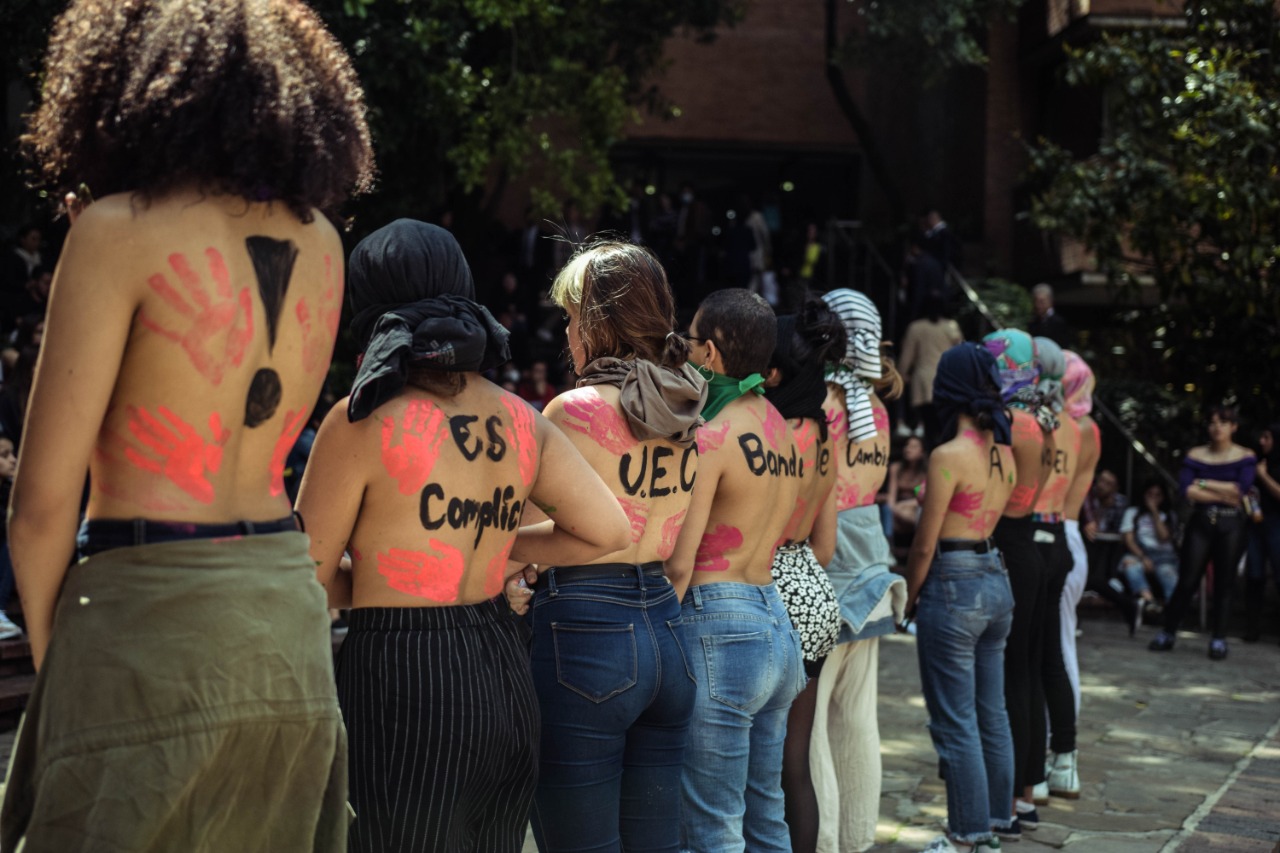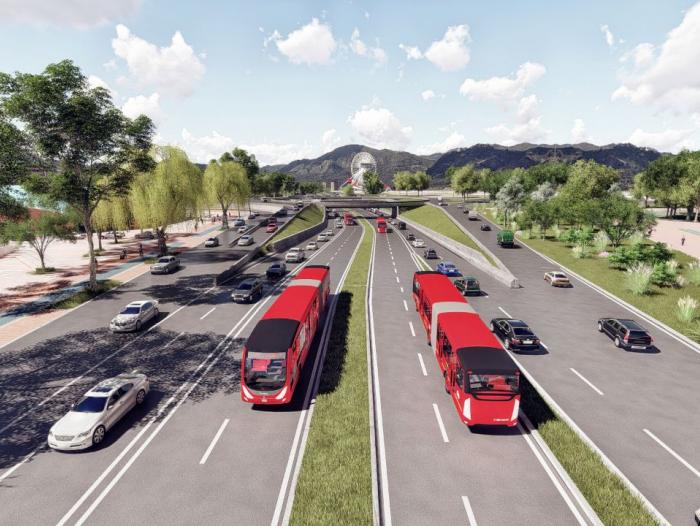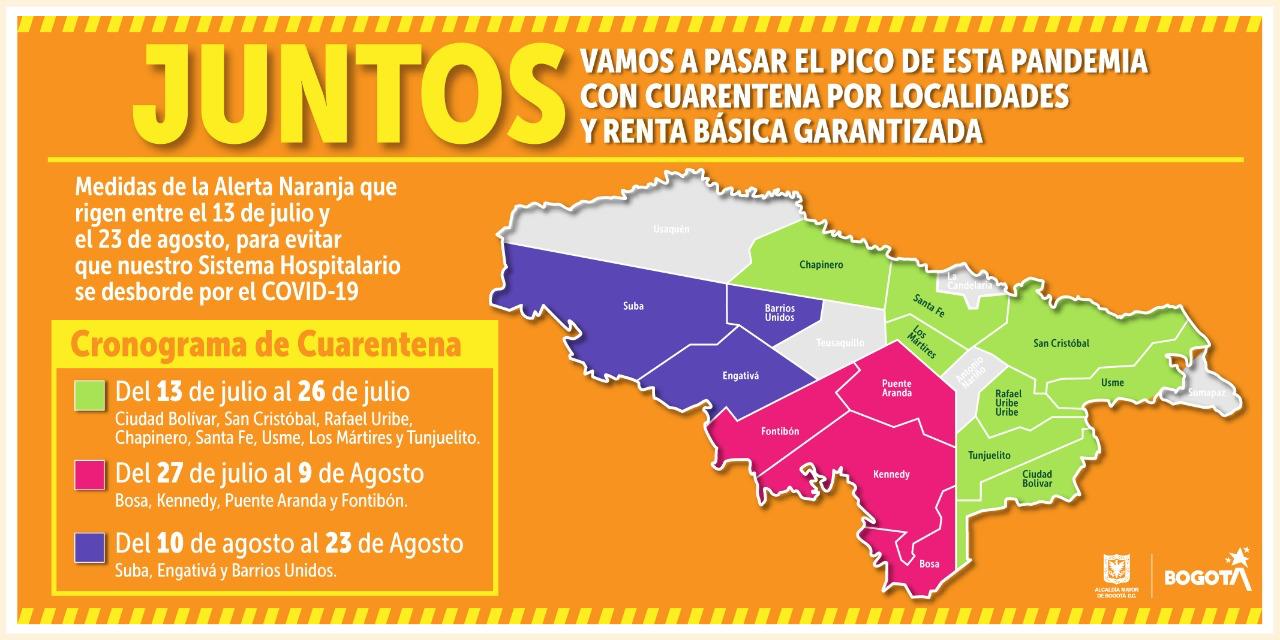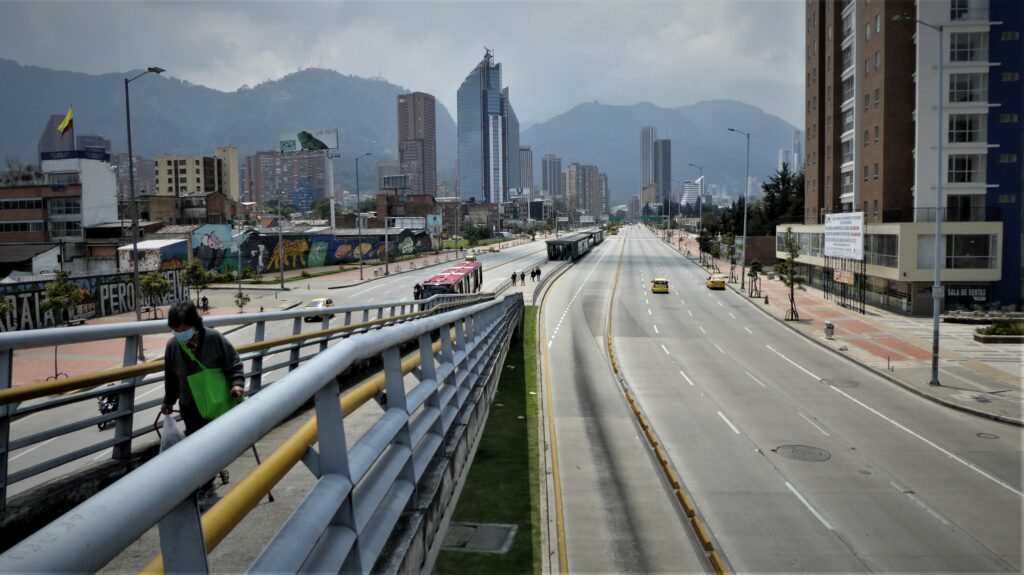
Key points on coronavirus cases in Colombia:
- 185 new Colombia cases since our last update
- Total cases now at 491
- Six deaths since start of outbreak
- Stats show severe illness also in younger people
- Testing for virus still facing challenges
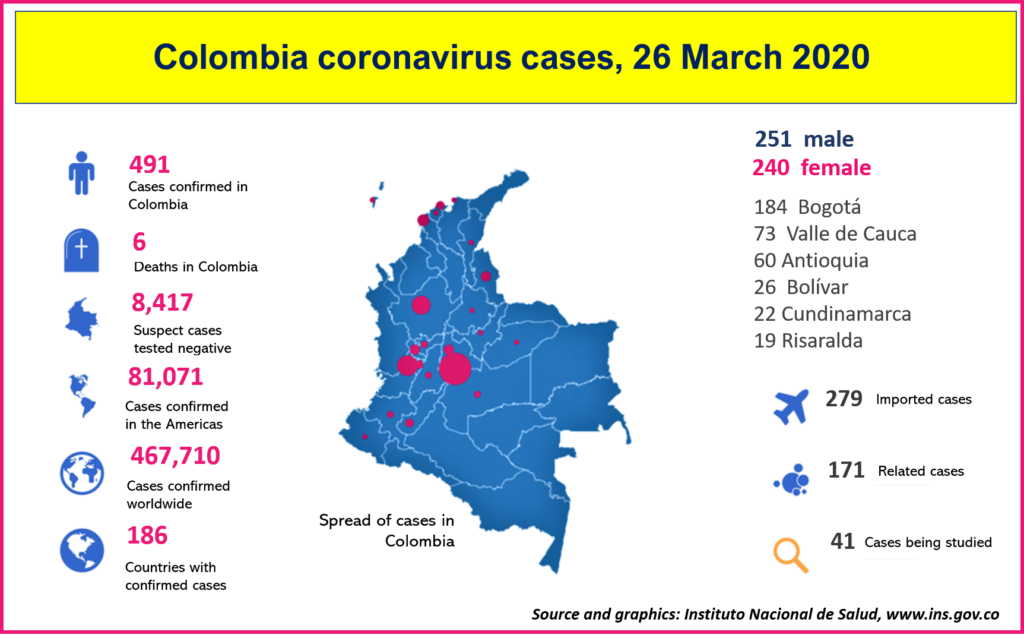
According to the latest data from the Instituto Nacional de Salud (INS), in the last four days more people caught the virus within Colombia (105) than brought it with them from overseas (80). So although import cases still make up the majority of infections (279) the trend is towards more local transmission. This is linked to international flight bans imposed for several days now.
Six deaths are now reported, with two in the age range 50 to 59, two in 70-79 and two over 80 years old. Three deaths are from Bogotá. Eight people have now recovered, and 450 are being treated at home.
Read our full coverage of the coronavirus outbreak in Colombia
Some 27 patients with COVID-19 disease are hospitalised across the country, the surprise being the relatively young average age of these severe cases (55 years) with some six persons under 40 years old. This suggests the acute illness here is not exclusively in the elderly.

Is the cure worse than the disease?
In Latin American countries, like Colombia, with extreme inequality another more immediate problem arises: The stay-home orders can have a devastating impact on people living from the informal economy such as street vendors whose income has evaporated overnight.
Then there’s approximately 10,000 already living on the streets, many sleeping rough or relying on a daily trickle of income to pay for their pagadiario hostel beds each night. Not to mention Venezuelan migrants threatened with eviction during the crisis. How can these vulnerable people self isolate?
Colombia’s quarantine 101: all you need to know
In Bogotá, the mayor’s office has scrambled to find ways to assist 350,000 poor families with subsidies and hand-outs so they can survive the quarantine.
Nationwide the government is doubling monthly payments to beneficiaries of the long-standing Familias en Accion program and making one-off cash injections to informal street vendors via the SISBEN social security system.
But will it be enough and reach the people who are most in need?
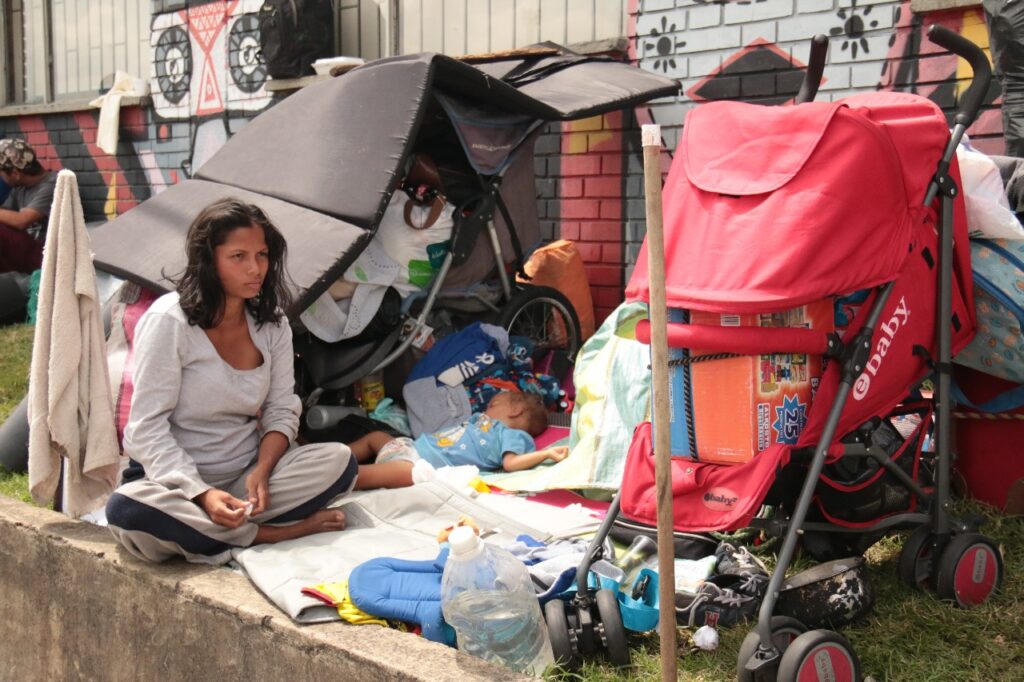
Mexico has taken another approach: keep the country open to protect the poor. Left wing President López Obrador is encouraging people to “take the family out to eat … because that strengthens the economy”.
Advocates of the “economy first” approach are generally wealthier nations trying to protect their GNP. These include the UK (briefly, it backpedalled after seeing mass deaths in Italy), the U.S. (President Trump wants to reopen the country to business by Easter) and Brazil (where President Bolsonaro has resisted lockdowns and called the coronavirus a “media trick”).
Public pressure to quarantine
The flaw in this strategy, according to counterarguments by some economists, is that the root problem is not government’s enforcing lockdowns; it’s the virus. As cases and deaths rise many populations demand isolation measures, and many would stay at home even if the government lifted travel bans.
For example:
- Under public pressure, the UK government changed from “isolation lite” to bolder restrictions. Now 93% support the quarantine.
- In Colombia, local authorities were calling for curfews even before a national lockdown.
- Mayors in Brazil are locking down cities in defiance of their president.
Coronavirus leaves tourists stranded in Colombia
In a less healthy response, Colombia’s illegal armed groups have joined the call for people to stay home. In its zonas of control the ELN is promoting self-isolation “with revolutionary punishments”, and ex paramilitary drug gang the Autodefensas Gaitanistas de Colombia have sent out leaflets in Córdoba insisting on even tougher restrictions such as an alcohol ban “or we will be obliged to take action.”
China on the mend?
Some Asian countries have managed to outsmart the virus without the need for massive lockdowns, rather using small local quarantines to stop spread by quickly tracing contacts of known cases.
This has only worked because of rapid mass testing and in some places the clever use of phone apps that use a Bluetooth app to record people proximate to an infected person. Europe and the Americas have been slow to implement that technical capacity.
But it was strict quarantine that characterised the response in China, the original source of the virus and most affected in terms of case numbers. Some good news is that China seems to be on the mend, both in terms of the outbreak and the economy.

According to recent scientific studies, the strict containment can be eased there successfully when tied to “rapid and ubiquitous testing” to firefight resurgent cases. This has allowed “low level economic activity” to resume in China and Hong Kong, reports the UK’s Guardian, even though coronavirus cases are still around.
Screen, test
Another key response has been testing, with the WHO reciting the “trace, test and treat” since early in the outbreak. Since March 6, Colombian health labs have done 9,000 tests in 19 days, less that South Korea in one day.
As we explained in the last update, the bottleneck here is not the lack of testing capacity (the country can do more than 3,000 a day) but lack of adequate test samples arriving at the labs.
An investigation into COVID-19 testing failures by the state control entity Procuraduría General and reported in Semana magazine has thrown up some worrying conclusions:
- Samples have been taken wrongly from patients, or packed and stored badly making test results inconclusive.
- Patient data has been lost in transit, or the samples poorly marked, and slow time to get results back to patients meaning higher contagion risks as they wait to hear if they are positive or not.
- Only five out of 32 departments have proper transport services for bio-risk material.
This means COVID-19 cases and deaths are being missed, with a reporting bias towards urban and accessible areas.
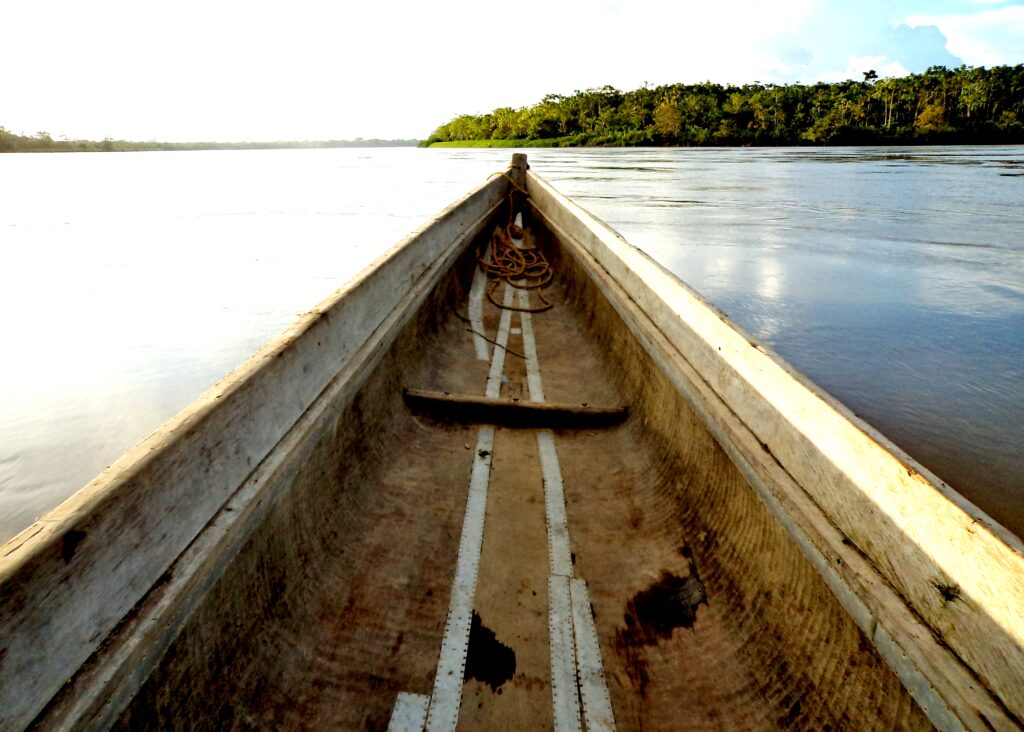
Given these problems, health authorities are aiming to import easier rapid tests and roll out COVID-19 detection to all 32 departments. But even then, in zones like the Llanos, Amazon and Chocó health teams will face huge problems to test and treat patients.
The Bogotá Post will bring you more details as they come in. Check our site for more coronavirus case updates. We’ll keep you posted.


